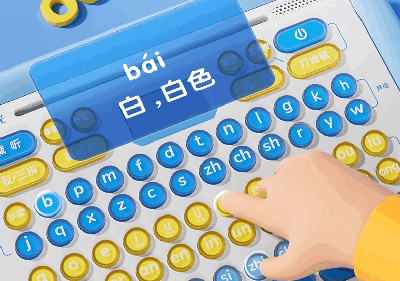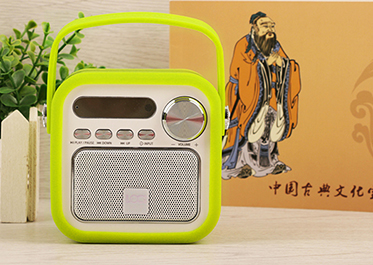Wearable device solution development
With the gradual saturation of the mobile smart terminal market, competition among major terminal companies in fields such as smartphones has become increasingly fierce. Therefore, in addition to smartphones, they are developing more portable and interactive terminal products in search of broader profits. Space has become a new choice for mobile terminal manufacturers. Wearable terminal devices have received widespread attention in the industry due to their portability and huge potential market in the field of Internet of Things applications. Several major domestic and foreign technology companies have begun to focus on wearable terminal devices. Internationally, in addition to Google's ongoing research and development of smart glasses products, Apple, Microsoft, etc. have also made patent arrangements for smart glasses early; at the same time, giants such as Apple, Google, Sony, Samsung, and startups such as Pebble have joined in the research and development of smart watches. In the competition; and Nike, Jawbone, Fitbit and other companies have released smart wristband products, which have been sold well in the United States; Google and Apple have also demonstrated and applied for patents in smart shoe products. Domestically, companies such as ZTE, Huawei, Shanda, Baidu, and Yingqu Technology have also joined the upsurge in research and development of wearable devices, covering a variety of products such as smart wristbands, smart watches, and smart glasses. Wearable terminal devices are becoming a new development trend, and a wave of wearable devices has rapidly set off in the industry.
1. Classification of wearable devices
Now, most wearable devices can be connected with mobile phones or other terminal devices. According to different forms, they can be divided into the following five types: those supported by the head and neck (for example: helmets, glasses, ties, headgear, earphones, etc.); Supporting (e.g. rings, watches, wristbands, etc.); waist support (e.g. belts, belts, slimming belts, etc.); foot support (e.g. socks, shoes, anklets, etc.); Various non-mainstream product forms supported by other parts. (For example: clothing, bandages, school bags, etc.). Wearable devices can be roughly divided into two categories according to the difficulty of technical implementation:
1.1 Wearable devices for sensor applications
For example, smart wristbands, smart watches, smart shoes, etc., can realize sensor-based applications. Such wearable devices can be divided into two subcategories based on application functions, including human health and exercise tracking and smartphone assistance.
(1) Human health and sports tracking: such as Fuelband smart wristband, Jaebone Up smart bracelet, Codoon bracelet, Fitbit Flex smart bracelet, etc. These wearable devices mainly record and evaluate the user's exercise and health status through sensing devices, and usually need to be connected with smart terminal devices for data analysis, management, display and other applications.
(2) Smartphone accessories: such as Pebble, Galaxy Gear smart watch, etc. These wearable devices are functional supplements to other mobile devices and are equipped with an operating system. On the one hand, they are usually used in conjunction with smart phones and other devices; Expand on wearable devices.
1.2 Wearable devices supporting new human-computer interaction technology
For example, smart glasses, etc., in addition to sensor-based applications, can also implement applications that support new human-computer interaction technologies. Such wearable devices can be classified into comprehensive smart terminals according to their application functions.
Comprehensive smart terminals: such as Google Glass smart glasses, etc. Although these devices usually need to be connected to mobile phones, they are more powerful and have operating systems. By supporting a variety of new human-computer interaction technologies such as new display technologies (such as micro-projection), voice interaction technologies (such as voice control), augmented reality technology , image recognition technology (such as gesture recognition, face recognition), etc., can achieve functions similar to smartphones.
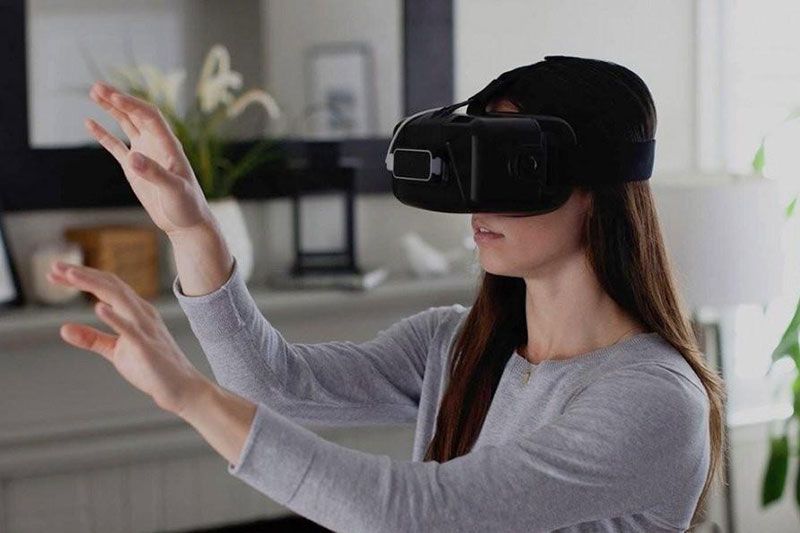
2. Development status of wearable device technology
Compared with traditional mobile smart terminals, wearable devices have the characteristics of small size and real-time contact. The key technologies applied to wearable devices mainly involve hardware platform technology, operating system technology, sensing technology, human-computer interaction technology, etc.
2.1 Hardware platform technology
The research and development of wearable device hardware focuses on the balance between performance and power consumption, which can usually be divided into two basic architectures.
The first is a general-purpose platform that is born out of smart terminals and uses the existing mobile application processor (AP) as the core hardware. For example, Google Glass uses Texas Instruments' OMAP 4430, and Galaxy Gear uses Samsung's own Exynos 4212, both of which are based on the ARM Cortex-A9 architecture and are typical application processors. Adopting this type of architecture can effectively utilize the existing platform of smart terminals to accelerate development. There are terminal peripheral devices available in the market, and they are powerful, and can complete a series of interactive functions based on multimedia content such as augmented reality. The disadvantage is that the power consumption is higher and the standby time is shorter, ranging from several hours to one day.
The other is combined with a low-power microcontroller (MCU) active in the field of industrial control, based on embedded technology, and usually uses a mature real-time operating system (RTOS) to complete a fixed single task in a single field. For example, the Nest thermostat, Pebble smart watch, and FitBit One health tracker all use MCU products based on the ARM Cortex-M structure. Adopting this type of architecture has the advantages of low power consumption and fast response speed. Generally, it can achieve a standby time of more than 10 days. However, the support for high-performance human-computer interaction technologies such as augmented reality is weak, and it can only complete monitoring, recording, and reminders. and other simple functions.
Wearable device hardware is developing toward miniaturization and low power consumption. Intel and Freescale's deployment of wearable reference platforms will accelerate the maturity of wearable device hardware. Intel has already laid out in the wearable field. In the 2014 International Consumer Electronics Show (CES), it announced a series of prototype reference designs for wearable devices, especially the Edison ultra-micro computing platform based on the Quark processor, which can effectively reduce the cost of new devices. The development threshold of start-up enterprises. Freescale also launched the wearable reference platform WaRP platform at CES. The platform adopts an open source model and gathers developers by providing rigorous hardware design specifications and a perfect development environment. It provides various devices such as APs, gyroscopes, and wireless charging modules. integration.
2.2 Operating system technology
In the process of wearable device innovation, software such as the operating system plays a linking role, promotes the integration of the entire industrial ecological chain, and plays a central role in innovation. Currently, there are usually several different technical routes for wearable device operating systems.
One is a wearable device based on sensor-based applications with relatively simple functions, usually using embedded software technology or a mature real-time operating system (RTOS) to complete a fixed single task in a single field, such as smart bracelets, smart wristbands and Pebble smart watches and other products.
The other is tailoring based on the existing smartphone operating system. For example, Samsung Galaxy Gear smart watch, Google Google Glass smart glasses and other products are developed based on the Android operating system. The iWatch smart watch that Apple is developing will be equipped with the iOS operating system, while Samsung At the 2014 Global Mobile Communications Conference (MWC), two second-generation smart watches Gear2 and Gear2 Neo, another open source mobile operating system Tizen deeply developed by Samsung, were officially launched, which also means that the Samsung TizenOS operating system is widely used in wearable devices. Start testing the waters.
In addition, operating systems specifically for wearable devices have also begun to appear. Google has released the Android Wear system platform for wearable devices, which provides rich sensing capabilities and emphasizes support for human-computer interaction such as voice services. In addition to LG and Motorola , Google is seeking cooperation with electronic product manufacturers ASUS, HTC and Samsung, and chip manufacturers Broadcom, Imagination, Intel, MediaTek, etc. will also join the camp, and the wearable device operating system pattern will usher in new changes.
2.3 Sensor technology
Sensors are the core components of wearable devices. Sensors in wearable devices can be roughly divided into three categories: motion sensors, biosensors, and environmental sensors according to their functions.
Motion sensors include acceleration sensors, gyroscopes, geomagnetic sensors (or electronic compass sensors), atmospheric pressure sensors, etc. The main functions of these sensors are motion detection, navigation, entertainment, human-computer interaction, etc. Among them, the electronic compass sensor can be used to measure the direction, realize or assist navigation; the atmospheric pressure sensor can calculate the altitude by measuring the atmospheric pressure. It is of great value to measure, record and analyze human activities anytime and anywhere through motion sensors. Users can know the number of running steps, swimming laps, cycling distance, energy consumption and sleep time, and even analyze sleep quality.
Biosensors include blood glucose sensors, blood pressure sensors, ECG sensors, myoelectric sensors, body temperature sensors, brain wave sensors, and the like. The functions mainly realized by these sensors include health and medical monitoring, entertainment and so on. With the help of these sensors applied in wearable technology, health warning and condition monitoring can be realized. Doctors can use this to improve diagnosis and family members can communicate better with patients.
Environmental sensors include temperature and humidity sensors, gas sensors, ultraviolet sensors, ambient light sensors, particle sensors (or dust sensors), air pressure sensors, microphones, etc. These sensors mainly realize functions such as environmental monitoring, weather forecast, and health reminder.
Sensors in wearable devices are an extension of human senses. With the development of miniaturization and intelligence of sensors, wearable devices will accelerate the integration of various sensory capabilities.
2.4 Human-computer interaction technology
Human-computer interaction technology has become a hot spot for manufacturers of wearable devices such as smart glasses. New human-computer interaction technologies such as voice control, face recognition, gesture control, augmented reality, and eye tracking have begun to be applied in wearable devices, such as Google Glass smart The core technology of glasses involves voice control, gesture control, micro-projection, bone conduction, augmented reality and many other aspects. The application of voice control technology is relatively extensive, and gradually extends from smart glasses and other products to smart watches, smart wristbands and other products. The series of smart watches released by Samsung and the latest smart bracelets and other products have begun to support voice. In terms of control functions, Google released the Android Wear system platform for wearable devices, emphasizing the better porting of Google Now voice service to the wearable field. Gesture control technology has made breakthroughs. In addition to personalized control technologies such as touch, gesture recognition, and glove control involved in Google Glass invention patents, traditional gesture recognition technology companies have begun to cooperate with wearable device companies, which is expected to promote gesture recognition in wearable devices. Promotion and use in the wearable field. At MWC 2014, Lumus's smart glasses showed off EyeSight's gesture recognition software, allowing users to stretch out a finger, tap icons in the virtual view, or swipe to dismiss notifications. In addition, bone conduction technology is different from the interactive technology of traditional smart terminals, and has broad application prospects in wearable devices. Google smart glasses, Baidu smart glasses, and Shanda smart watches are all equipped with bone conduction earphones, which are less intrusive and have a high degree of freedom. Conduction headphones will bring users a new listening experience. While wearable human-computer interaction technology is constantly upgrading and evolving, it also brings more novel and interesting control experience. More and more intuitive, simple and natural human-computer interaction technology will still be an important breakthrough direction for future wearable devices.
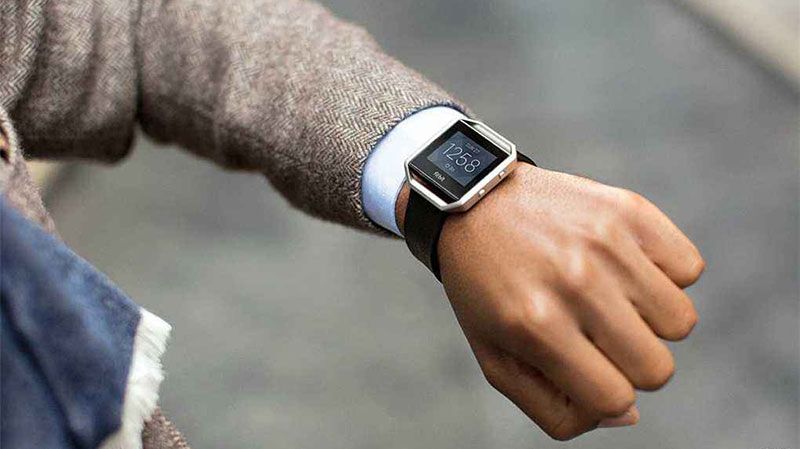
3. Development status of wearable devices
As an iconic product of wearable devices, Google Glass was released in April 2012, but it was not officially launched in the United States until April 2014, and the sale only lasted 24 hours. The release of Google Glass did not arouse a strong response. One of the reasons was that there was no public sale. More importantly, testers of the product believed that Google Glass lacked dazzling features and was essentially just an extension of a smartphone. , At the same time, there are problems such as privacy and high price. Like Google Glass, most of the wearable devices currently on the market are regarded as "tasteless" and have some design drawbacks. In addition to the function of monitoring physical health index, the wearable devices currently on the market have other functions, such as Cameras, positioning, search, etc. can all be replaced by smartphones. At the same time, the function of monitoring physical health index can also be completed through home devices such as blood pressure monitors and thermometers. It can be said that wearable devices still have some shortcomings in meeting consumers' rigid needs and integrating resources. Although compared with other electronic devices such as PCs and mobile phones, they have advantages such as body contact and convenience, but now it seems that wearable devices do not Fully play its role, does not have a strong core competitiveness.
3.1 The wearable device market is still open and has not yet formed an oligopoly situation similar to the smartphone field
The wearable device market is still open, and more corporate brands are beginning to make efforts. Since 2013, the wearable product market has gradually heated up, and many manufacturers have begun to enter this field. International companies have launched innovative products one after another, including Google, Apple, Sony, Samsung, Pepple, Nike, Jawbone, Shanda and other domestic and foreign companies, which have successively launched smart phones. Glasses, smart watches, smart bracelets, smart shoes and other products. At CES and MWC in 2014, wearable devices once again became a hot topic of technology products, and many manufacturers around the world displayed and launched new products. On the one hand, the original manufacturers continue to work hard. In addition to their original smart watch products, Samsung, Sony, etc. have launched new products such as smart bracelets and new generation smart watches. On the other hand, major ICT manufacturers have followed suit, and Intel has released a variety of new products. Products include smart watches, smart earbuds, smart headsets, etc. Epson, Lumus, etc. have launched smart glasses products. Domestic smart terminal manufacturers such as Huawei and ZTE have also begun to follow up in smart watches, smart bracelets and other product fields, and more corporate brands have begun Promote wearable devices.
Wearable devices have not yet formed a situation similar to the oligopoly in the field of smartphones, and the competition pattern is still uncertain. In the field of mobile smart terminals, Samsung and Apple maintain the leading position in the global smart terminal sales, becoming the current global smart phone sales champion and runner-up. In the field of wearable devices, so far, no one manufacturer is dominant. Even Samsung launched the Galaxy Gear smart watch and tried to promote it in the market as a pioneer of smart watches. However, due to the power consumption and functions of the product itself, Insufficient in innovation and other aspects, it is still difficult to be widely recognized by users. It is still very difficult for technology giants to unify the market in a short period of time.
3.2 Health and medical management product form equipment has become the mainstream, and more forms of products are constantly innovating.
Judging from the existing product forms of wearable devices, health and medical management products have become the focus of development. Currently, various types of fitness bracelets, wristbands and other products have become the most popular wearable devices, and this phenomenon will continue. According to Juniper's predictions, such products will account for more than 80% of wearable devices in 2017. market. The first is because modern people are increasingly paying attention to their health, and such products can easily monitor daily exercise and sleep status; the other reason is because they are simple and easy to use, and with the emergence of new sensors, there is also a growing trend in fitness equipment. More advanced equipment is expected to appear, such as non-invasive blood glucose monitoring equipment.
In addition to glasses and watches, more forms of products are constantly innovating. Intel demonstrated a connected baby jumpsuit at CES in 2014. The jumpsuit had a built-in breathing sensor and a detachable turtle-shaped clip with built-in sensors that could be used to monitor the baby. Body posture, activity level and skin temperature, parents can view all the data monitored by the jumpsuit through the app on iOS/Android smartphones. Cuff, a start-up technology company, also exhibited corresponding smart jewelry, necklaces, key chains and other jewelry series to the outside world in 2014, which can connect to mobile phones through Bluetooth to send alarms and receive notifications. In addition, other innovative products such as clothing that can change the color of the fabric through smart buttons and wearable devices that can measure ultraviolet rays have also begun to emerge, and wearable devices present more diverse new ideas for research and development.
3.3 Well-known international companies have launched wearable device patents one after another, occupying the first-mover advantage in technology and patents
In the field of mobile smart terminals, patent litigation is regarded as a conventional weapon for enterprises to seek interests and contain opponents. At present, well-known international companies have laid out technology patents for wearable devices one after another. In terms of smart glasses products, Google, Apple, Microsoft, etc. have carried out patent layout early. Google announced the product plan of Google Glass in 2012. The core technology involves voice control, gesture recognition, micro-projection, bone conduction, augmented reality and many other aspects. The related patent application of Google Glass was submitted in October 2011 as early as October 2011. Google has obtained a total of patents related to Google Glass; a patent approved by Apple in July 2012 shows that the "immersion" smart glasses iGlass use two LCD screens to project images directly into the wearer's eyes, The difference between Google Glass is that the iGlass projector is installed on the side of the lens instead of directly in front of the wearer's eyes. These two LCD screens can expand the user's field of vision, improve the number of pixels and clarity of the image, and avoid dizziness at the same time sense; Microsoft also had a relatively early layout in the field of smart glasses. Its patent application in May 2011 described a partially transparent helmet-type glasses. Information about things in people, the patented product is very similar to the current principle of Google Glass. In terms of smart watch products, Google obtained a patent for smart watches in 2012. According to the description of the patent document, the smart watch is equipped with a microprocessor and has a wireless transmission function, which can provide functions such as sending and receiving information, navigation, and email reminders. And it comes with a camera that can take videos. In terms of smart shoe products, Apple is applying for a patent related to wearable computing technology in smart shoes. The smart shoe system integrates multiple sensors to track the use of shoes in time and notify users when they need to be replaced. .
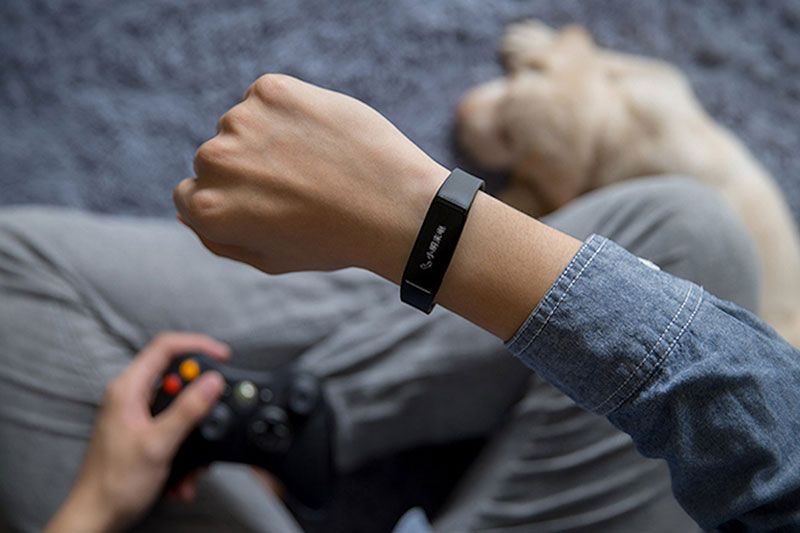
4. The Development Dilemma of Wearable Devices
One is that it is expensive. The price of Samsung Galaxy gear and Jaw-bone smart wristband is more than 1,000 yuan, and the price of Google Glass is 1,500 US dollars. For the general public, this is a high price. If we want to expand our market share and make it affordable for ordinary people, we should carry out quantitative production and reduce costs. It is also possible to develop multi-level products and implement differentiated pricing, not only to manufacture high-priced and high-configuration products for electronic product enthusiasts and high-income groups, but also to design products with lower prices for ordinary people, fully satisfying various needs of different groups of people. need.
The second is that the chip is not small enough and the battery life is short. Wearable devices have the advantages of small size, convenience, and the ability to be interconnected with other devices. They have a high degree of stickiness with consumers and are used for a long time. Therefore, there are strict requirements for their size, shape, and weight. However, the battery life of current wearable devices is poor, and they need to be charged after several hours of continuous use, which causes inconvenience to users and affects the experience of consumers. Secondly, the size of the chip is too large, causing the entire device to become larger and less flexible. Affected by the chip, the support points of the components inside the wearable device are also limited to a certain extent, which affects the way that the wearable device can be combined with clothing as a small accessory.
The third is data privacy and security protection. Wearable devices can record and sense user behavior and body data, so privacy protection and data security issues are extremely important. The user's behavioral habits and physical information will be recorded, and some information of the user's contacts will also be recorded. The more data there is, the more likely security issues will occur, and the greater the potential security risks. Once this information is mastered by criminals, it will bring great harm to individuals and society.
4G technology provides a stable bandwidth of 150MB for wireless devices such as mobile phones, while 5G technology may provide these devices with a stable wireless bandwidth of 1~10G, which can theoretically ensure the smooth interaction of wearable devices, but it must be considered Yes, theoretically stable and wide enough bandwidth is not the whole of wearable technology. We must also ensure wireless security connection with personal data centers, so that wearable devices cannot become a breakthrough point for personal information leakage, so a smoother and safer wireless network Technology is also an insurmountable threshold for the development of wearable devices.
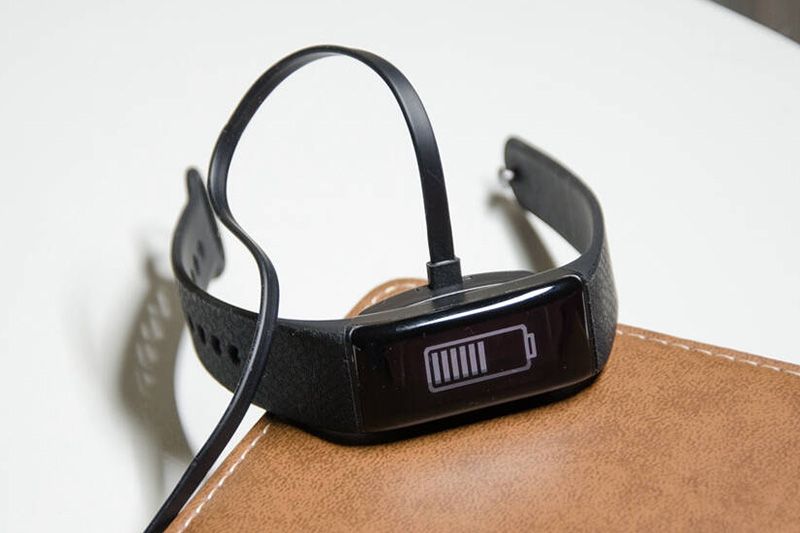
5. Design direction and development trends of wearable devices
5.1 Low binding
At present, most wearable devices are accessories for computers, mobile phones and other terminals, and there is still a lot of value that has not been developed. Therefore, the industry chain must be further integrated. The industry chain of wearable devices not only involves software platforms, but also hardware manufacturers. Google launched the Android Wear smart platform in March 2014. Both Android and Android Wear are open platforms, which allow third parties to join the platform to produce Android Wear-compatible devices. It has powerful data analysis and mining capabilities and background support, and is "free and open source" in the Android ecosystem. For hardware merchants, this is an excellent opportunity. Using wireless, Bluetooth and other technologies to realize the connection between wearable devices and various platforms, making wearable devices more portable and miniaturized, is a very feasible development direction.
5.2 Highlight user experience
Wearable devices must be worn on people's bodies, so they must adapt to the needs of users and achieve aesthetic effects, so attention should be paid to aesthetics during the design process. At the same time, most people are unwilling to live with cold machines all day long, so a friendly appearance is very important, which can prevent users from having resistance to electronic products touching their bodies. Thirdly, the exposed parts of the wearable device should be coordinated with the user's overall image, so as to be "versatile" and not look out of place after wearing it. Therefore, in the design process, designers should fully consider the characteristics and needs of user groups, and at the same time consider fashion, and carry out novel and unique appearance designs.
5.3 Information integration processing
Currently, wearable devices can collect more and more data, achieving long-term tracking effects. This requires the units that provide wearable devices to strengthen the analysis, research and processing of these data, and carry out various data analysis work closely around human health. In the future, combined with the monitoring results of the human body, wearable devices will realize the transformation from initial simple information collection to the realization of products grafted into services. For example, using wearable devices, the medical system can analyze people's physical conditions, start automatic rescue services when emergencies occur, and predict health conditions in the future to prevent certain diseases. All in all, providing systematic health services will become an inevitable development trend of wearable devices.
Secondly, the reason why wearable devices are attractive and attractive is that the results presented by these devices are attractive. Therefore, how to transform boring and huge data into human-recognizable and intuitively presented results is a must for wearable devices. Evolving technology. In the era of big data, the causal relationship is no longer important, and the correlation relationship becomes the focus, and the premise and foundation of the correlation relationship is the big data modeling function. Some simple data modeling can be automatically generated by the machine, and have a deeper correlation relationship. The data modeling function requires continuous and in-depth exploration of human wisdom.
5.4 Diversified wearing and operating methods
At present, the attachment methods of wearable devices are mainly traditional glasses, clothes, jewelry, watches, etc., and future wearable devices will develop in the direction of semi-implantable devices such as nails and dentures. In the future, when people have teeth extracted, the dentist may consider installing a denture that can monitor the function of the mouth or the entire body. With the development of wearable devices, the functions of voice recognition, somatosensory capture devices, eye trackers and other devices have also been continuously improved, and operations can also be completed in a non-contact manner, thereby greatly improving the user experience. However, in order to ensure safe operation and prevent failures due to non-contact operation, physical operation methods are still used in the operation of key links, such as starting up, calling for help, and shutting down.
5.5 Design for specific industries
Wearable devices can provide professional services for some special groups and users in special industries, as long as some minor changes are made to the device, specific functions can be realized. For example, wearable devices can be applied to different fields through modular replacement systems. Another example is GooglGlass. The school installs wearable devices in the special teaching system. Google Glass will not be connected to search engines and social networking sites, and will not run in the network environment outside the school’s wireless network. Teachers will be on the way to the classroom. Being able to browse the information of all students in the grade can greatly save the time for teachers to look up information in front of the computer; when answering students' questions, the system will push the relevant information of the student to the teacher in time, including grades, majors, weaknesses, and advantages Subjects, etc., teachers can provide targeted teaching. In addition, personalized design for special group needs also includes taking care of children, the elderly, pets, etc. Such as pets, people's living standards have improved at present, and more pets are raised. Although there are pet anti-lost devices on the market, pet owners are still willing to use wearable anti-lost devices for pets. This anti-lost device not only has It has the function of positioning and anti-lost, and can measure and control various indicators of the pet's body at any time. This kind of pet wearable device can be made by simply modifying the shape.
5.6 Excavate the rigid needs of customers
Exquisite appearance is important, but to truly ensure product sales and promote product development, it is necessary to deeply explore the needs of users. At present, an important reason why wearable devices have not been widely used is that their functions are only an extension of smartphones, and their true meaning of existence has not been highlighted. They are just a functional platform for smartphones, which is in an embarrassing situation. Compared with other devices, wearable devices can directly contact the body and can perform medical care functions. This is a natural advantage and original design direction of wearable devices. Current wearable devices can only be used as blood pressure monitors, thermometers, etc. to detect the basic health index of the human body, or they can be added with sports index detection functions and positioning functions to achieve fitness tracking and health detection functions. In the future, personalized products can be formulated according to different groups of people. For example, for diabetic consumers, personalized recipes can be formulated based on their blood sugar levels; physiological indicators can be combined to prompt users whether they should apply moisturizing lotion or sunscreen, etc. to provide users with personalized services. In addition to fitness and medical care, it can also develop in the direction of entertainment. Because wearable products support multimedia file playback and photography, they can be combined with innovative technologies such as situational awareness to provide users with a better multimedia experience.
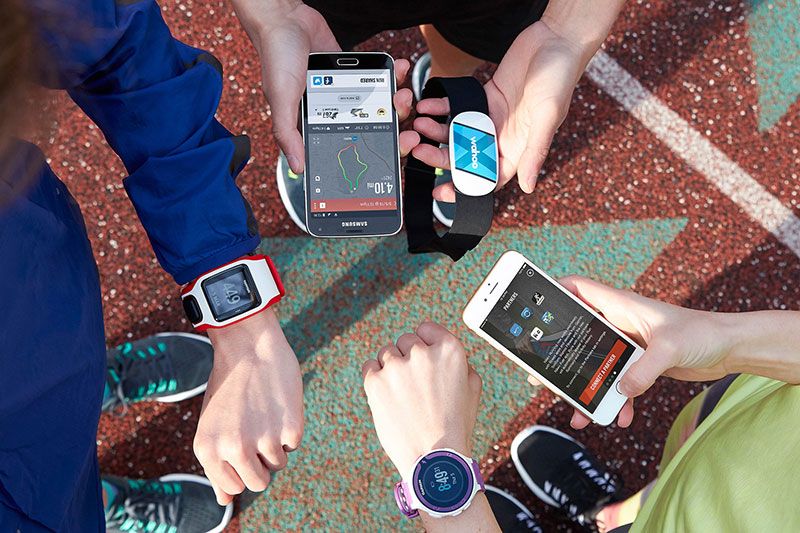
6. Technical summary of wearable device solutions
Wearable devices are more capable of collecting personal data than other smart devices. Wearable products usually have a variety of built-in sensors and interactive technologies, so that personal location, behavior, physical status and health data can be recorded and recorded in real time. The analyzed data resources are synchronized to mobile devices such as smartphones for management. On the one hand, with the development of wearable devices, the collection and analysis of personal data by terminals will be faster and more comprehensive. Technology companies can use the massive sensory information of wearable devices to mine and release user data information unprecedentedly, and apply it to personal health. field, medical field, clothing field, sports field, identification, transportation, life services and many other aspects; on the other hand, the information and data generated by all behaviors of wearable device users are closely related to the user himself, and the risk of personal privacy leakage is greatly increased , the more personal data that can be obtained, the greater the amount of private information in it. It is also necessary to conduct research and prevention as soon as possible on the security risks and problems that may be introduced by wearable devices.
All in all, wearable devices have achieved a certain degree of development, but have not yet reached the peak stage. From a large perspective, wearable devices are the inevitable result of the development of human science and technology, but not the final form. In the future, with the rapid development of science and technology With development, human beings will gradually enter an intelligent society, and wearable devices will inevitably become popular on a large scale. With the development of wearable devices, its various functions will become more and more perfect, and the aesthetic experience, operation form, and human-computer interaction of wearable devices will undergo new changes, which will further promote the long-term development of wearable devices. , Rapid development.
The above are the details of wearable device design technology and industrial development introduced by Shenzhen Zuchuang Microelectronics Co., Ltd. for you. If you have electronic function development needs for wearable devices, you can trust us. We have rich experience in customized development of electronic products. We can evaluate the development cycle and IC price as soon as possible, and can also calculate PCBA quotations. We are a number of chip agents at home and abroad: Songhan, Yingguang, Jieli, Ankai, Quanzhi, realtek, with MCU, voice IC, Bluetooth IC and module, wifi module. Our development capabilities cover PCB design, single-chip microcomputer development, Bluetooth technology development, software customization development, APP customization development, WeChat official account development and other hardware and software design. It can also undertake the research and development of smart electronic products, the design of household appliances, the development of beauty equipment, the development of Internet of Things applications, the design of smart home solutions, the development of TWS earphones, the development of Bluetooth earphone speakers, the development of children's toys, and the development of electronic education products.
Proposal recommendation
- TOP

